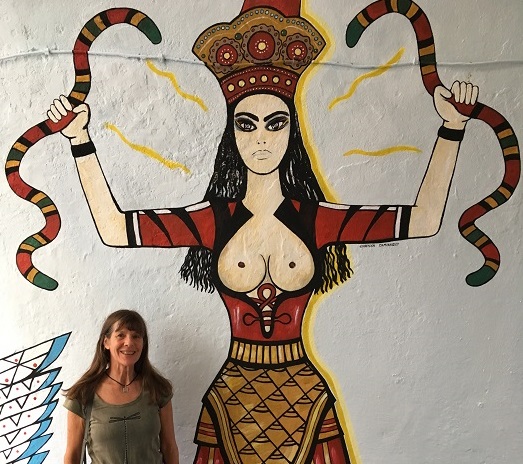
Join Thor and me as a few kilometers of roads (with slight detours) takes us from ancient Minoan Phaestos to Roman Gortys to modern Irakleio. And images of my writing muse Ariadne, old and new.
NOTE: Of course, Thor and I had to make another trip to Greece, as he’s fallen as much in love with the islands as I am. This time, in addition to other island-hopping, I wanted to return to Crete after 37 years. My first months-long trip was as a hippie backpacker, camping in the ruins and falling under the spell of the mysterious, vanished Minoan culture. This time, I got to introduce Thor to “glorious Kriti” and research more settings for my novel-in-progress, THE ARIADNE DISCONNECT. This new blog series started October 19, 2019, and will continue every Saturday.
Last time (blog post of Dec. 14), Thor and I departed the serene archaeological site of Minoan Phaestos and headed north toward the bustling port city of Irakleio and the famous site of Minoan Knossos. On the way, I wanted to see the Roman site of Gortys. After an unplanned detour through fields and dusty villages as Thor’s “girlfriend” Siri became very confused about place names, I followed the traditional navigation technique of asking locals the way. A couple of truck drivers at a roadside kafenion spoke no English, but directed me to a woman who understood enough to point the way. “Efcharisto” (thank you) once more to the patient, generous Greeks!
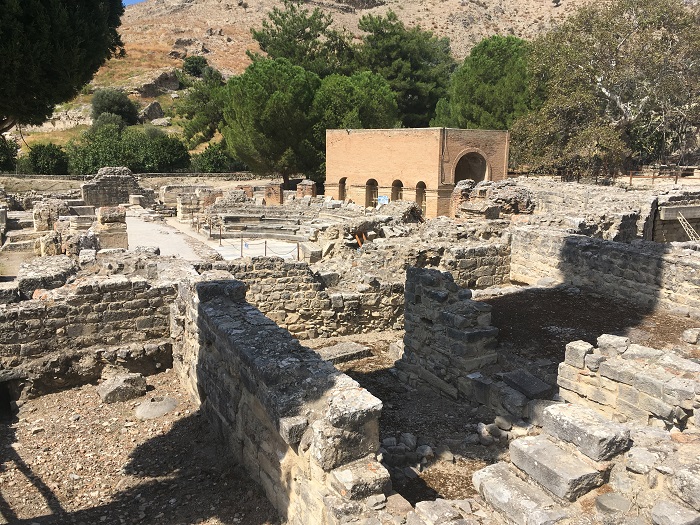
Gortys was settled in ancient Minoan times as a minor subject of Phaestos, but gained more influence when the Dorians from mainland Greece came to power on Crete, and by the 8th century BC had commercial importance. In the 3rd century BC Gortys conquered Phaestos, and later the Romans took and made the city their capital to rule all of Crete. The oldest remains include the Odeion, or theater, which was originally covered, from around 500 BC.
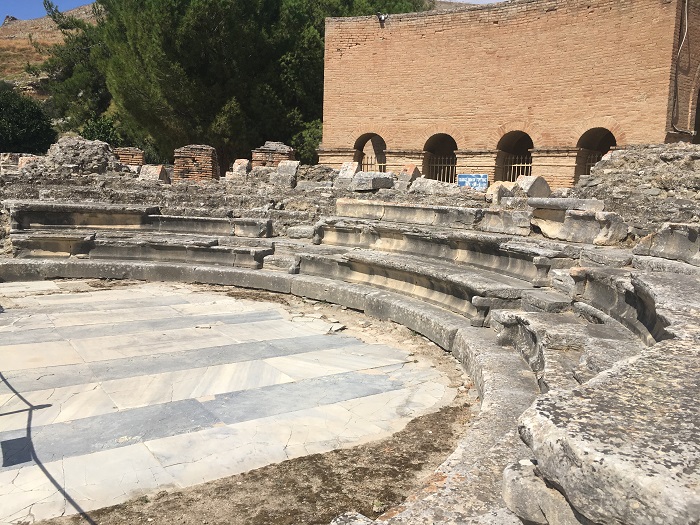
The modern brick building behind it shelters the most important artifacts, the Low Code of Gortys. The series of engraved stones 9 meters long and 3 meters high dates also from around 500 BC, and details specific rules mandated by the Dorian rulers.
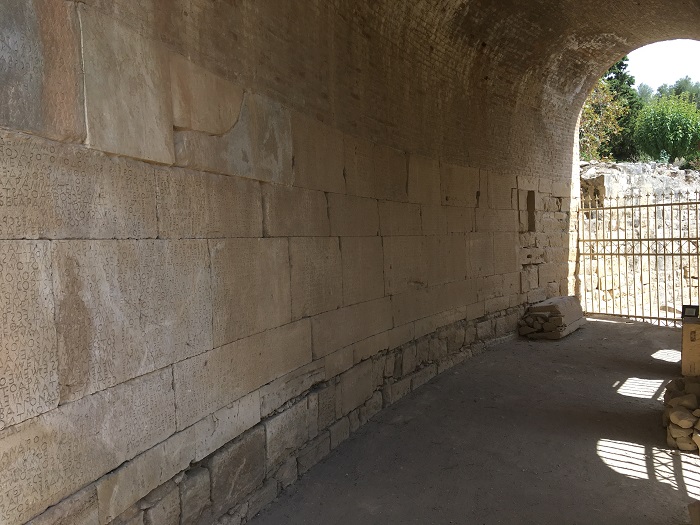
Apparently life under the militaristic Dorians was similar to that in regimented Sparta, which must have been quite a change for the descendants of the Minoan culture, known for its beautiful, gentle art and apparent equality of women and men. The law code detailed punishments for misbehavior by the three separate classes: citizens, serfs, and slaves. For example, the rape of a female citizen was punished by a fine of 100 staters, while rape of a serf carried only a 5 stater fine. The laws are recorded in a rough Doric Cretan dialect and inscribed alternatively right to left and then left to right in a style known as boustrophedon, after the furrows of an ox plowing.
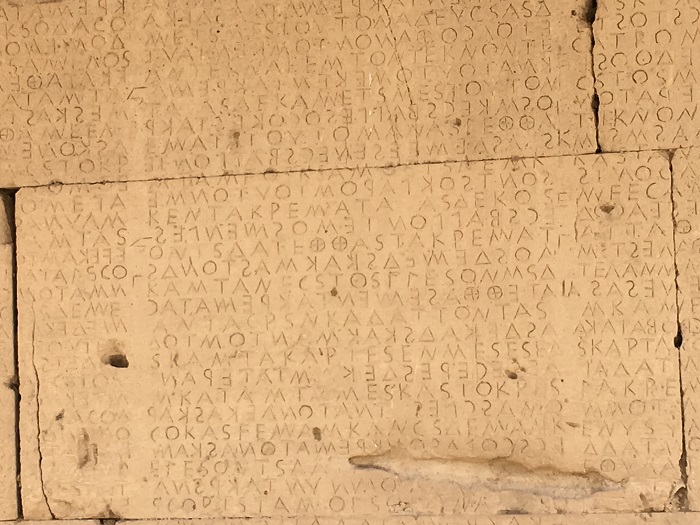
Past twisty old olive trees….
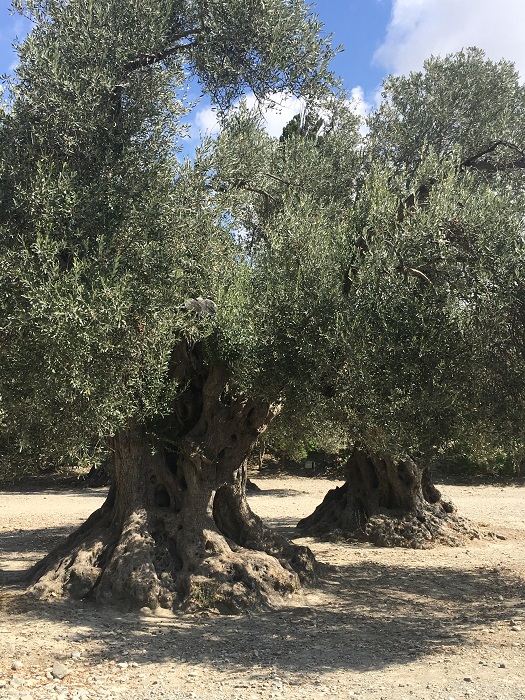
…more footings lead toward the remnant of one of the earliest Christian churches on the island.
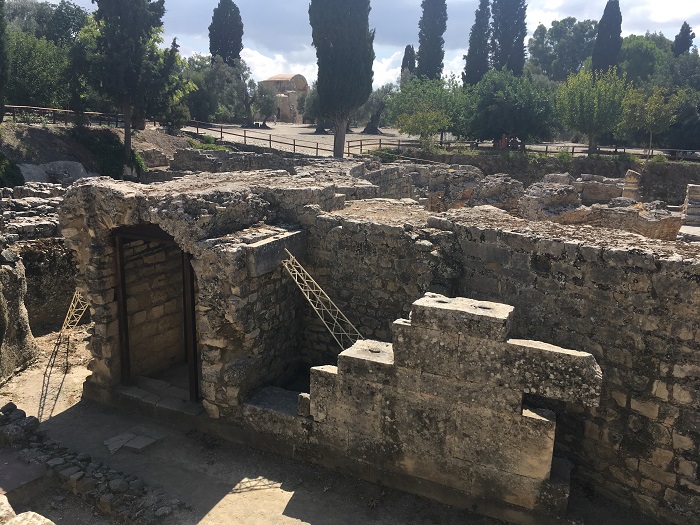
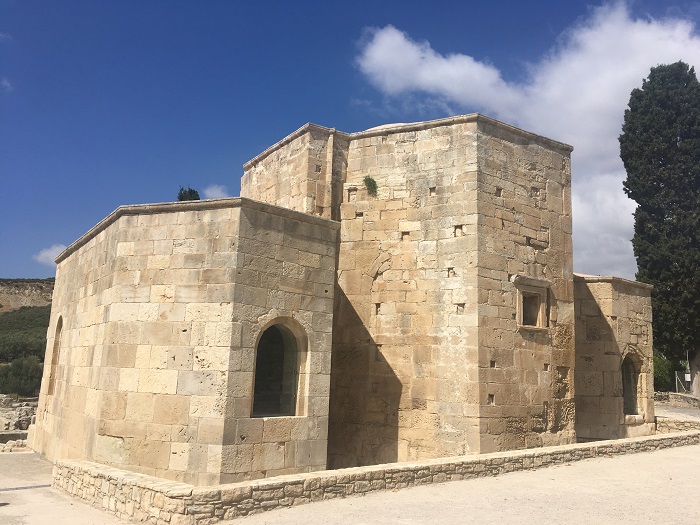
The church of Agios Titos was named for Saint Titus, who was sent to Crete by St. Paul to convert the islanders. It was built in the late 6th century AD, and its capitals show the monogram of the Byzantine emperor Justinian.

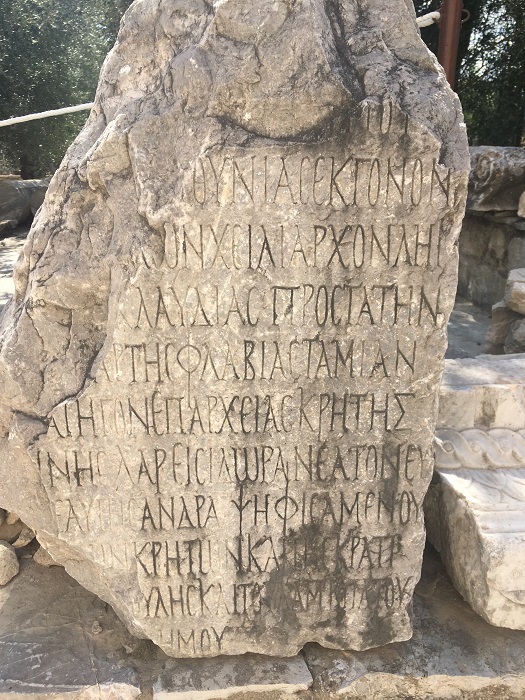
Across the road is an extensive site under excavation and fenced off, the Roman Praetorium (governor’s palace) and associated temples and other structures.
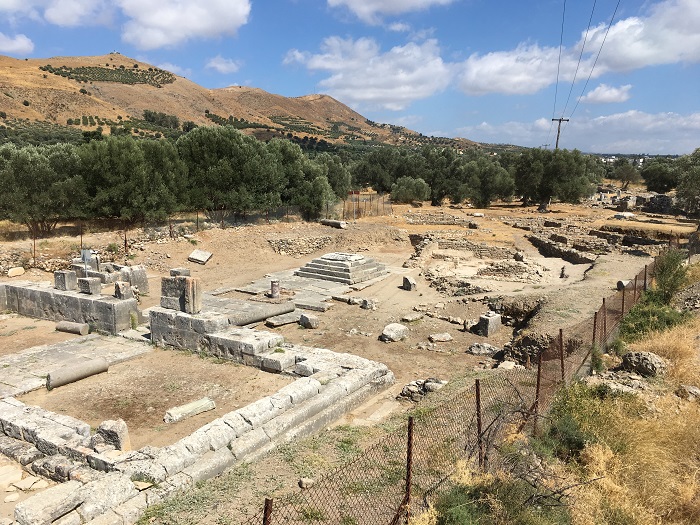
On one corner is another venerable olive tree, this one 1600 years old, that has grown around pieces of ancient marble columns.
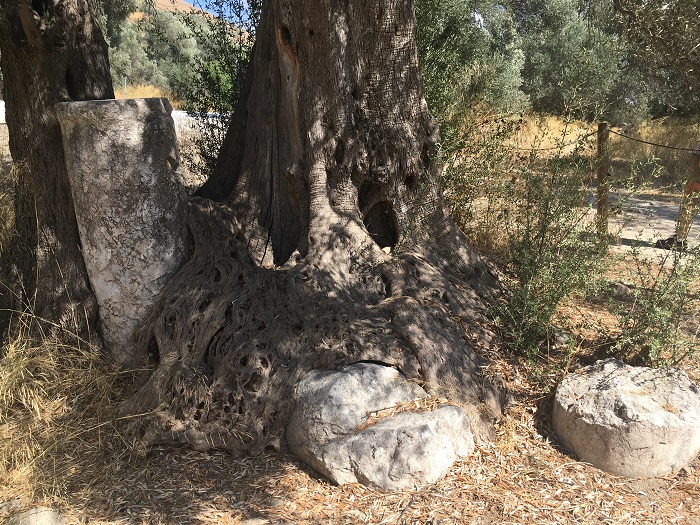
We followed the fence to peer at the structures unearthed so far:
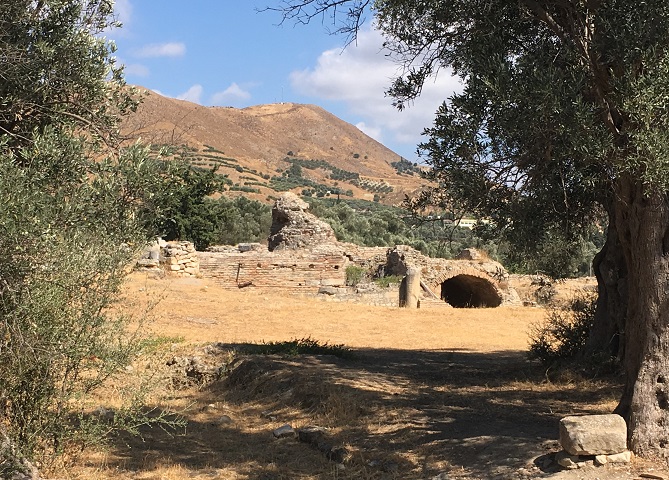
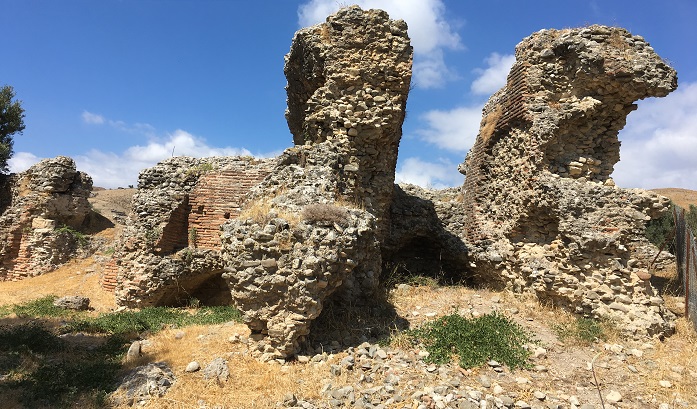
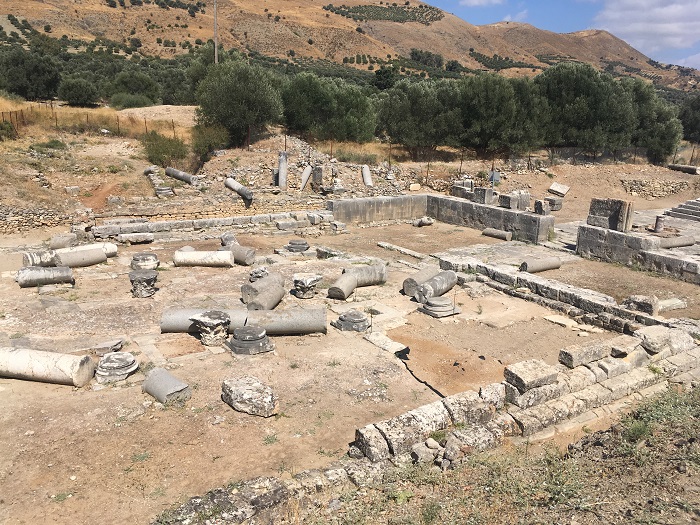
Then it was off on the highway north to Irakleio, a harrowing drive– this one not due to twisty mountain roads with precipitous dropoffs, but rather increasingly congested city traffic and a hectic re-entry into modern life. We managed to find our hotel in the city center, then realized that there was no parking near it in the tight quarters of “old town.” After finally finding a parking garage and executing some hasty repacking at its entrance, we checked in our rental car and found a taxi to take us to the hotel with our luggage. Note to self: Never assume parking is available in historic areas!
Our hotel did have a lovely view from its balcony of the ancient harbor and Venetian fortress built in 1530, which defended the city from invading Turks in the 17th century.

Thor, once more my heroic driver, settled his nerves with dinner and retsina, topped by the mandatory dessert ouzo, at a lovely nearby courtyard restaurant tucked off a cobbled lane. Since most Greeks eat dinner late, we were the only patrons.
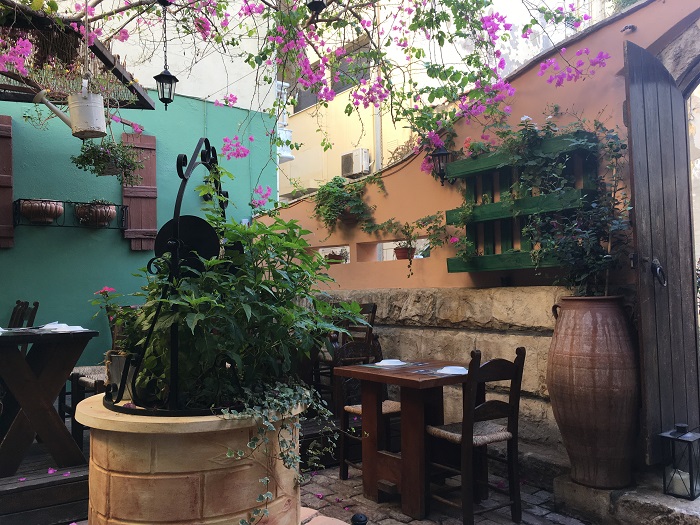
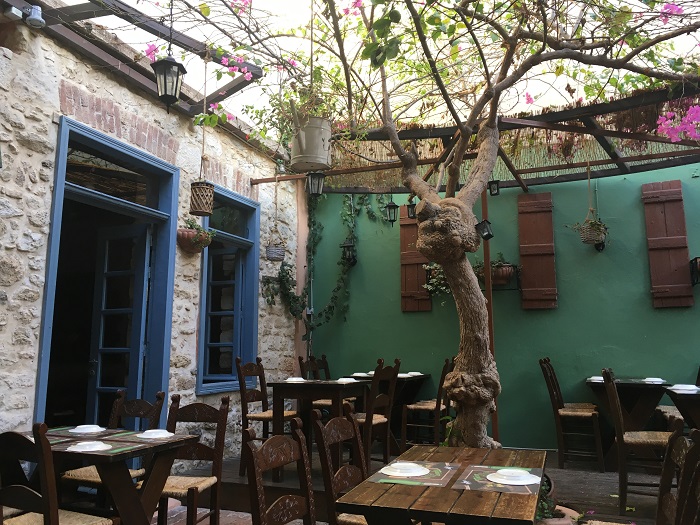
We followed more cobbled lanes toward the Irakleio Museum of Archaeology, hoping to catch a few of the exhibits before closing, in preparation for an early morning visit to Minoan Knossos. Along the way, the city showed its pride in history with some wonderful murals recreating the designs of famous Minoan frescoes.
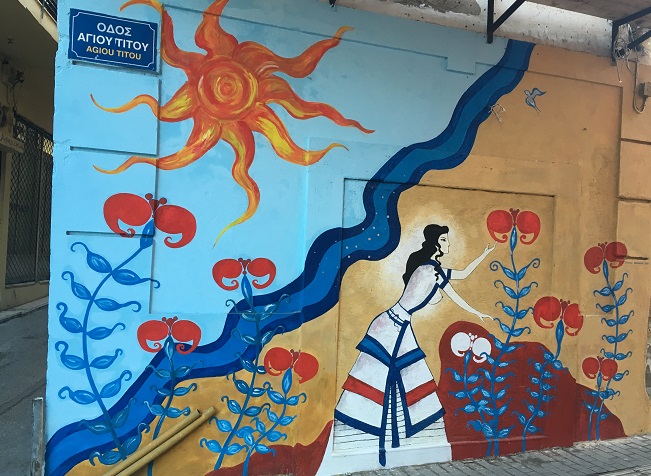
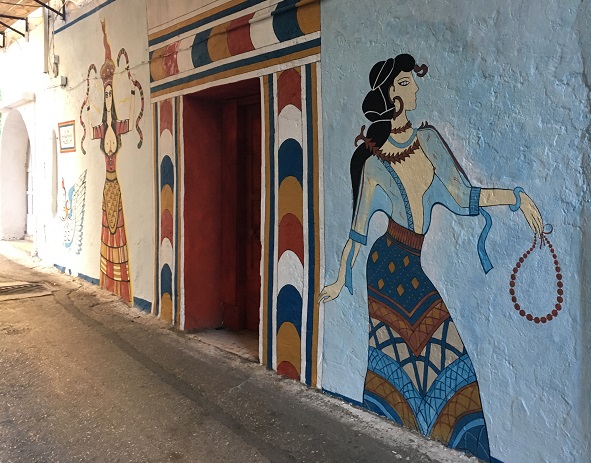
Thor is quite enamored of the lovely Minoan women depicted in their frescoes, which seem to celebrate the grace and power of the women and their roles as priestesses.
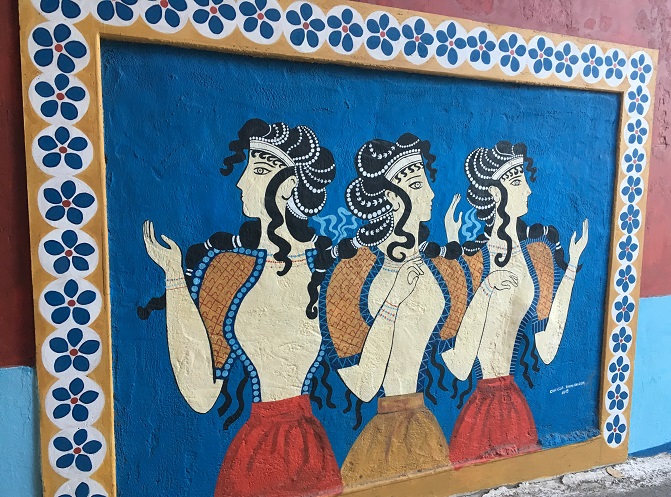
We’ll take a tour of the museum in upcoming blog posts, but here’s a teaser of the original fresco that inspired the mural above. It’s amazing to see how much can be extrapolated from the preserved fragments.
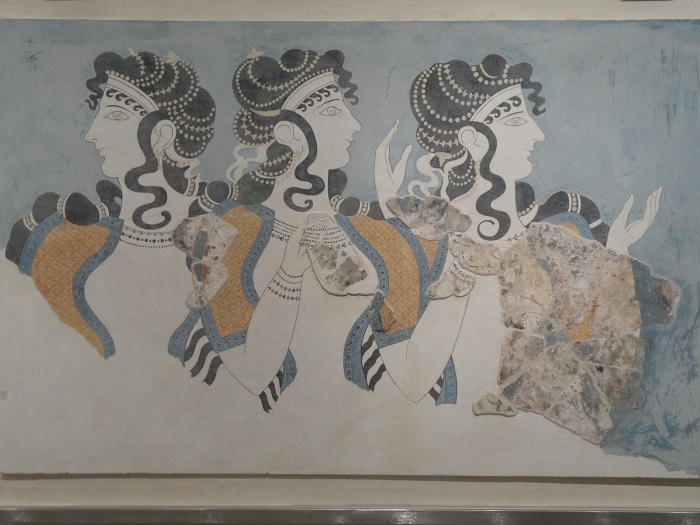
My inspiration for my near-future Greek novels is the original Princess Ariadne, daughter of King Minos and probably a priestess of the labyrinth where he kept the bull-headed Minotaur. This figurine in the museum, which I fell in love with on my first visit decades ago, is possibly a priestess or a goddess with the sacred serpents. In my mind, she is Ariadne.
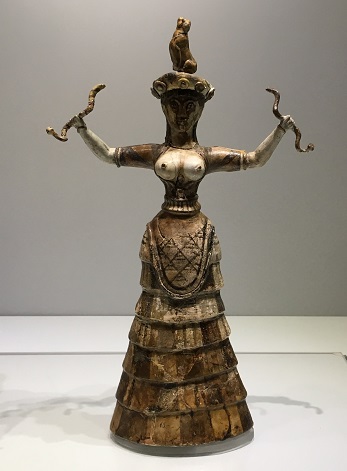
Glorious Kriti! Chairete! Rejoice!
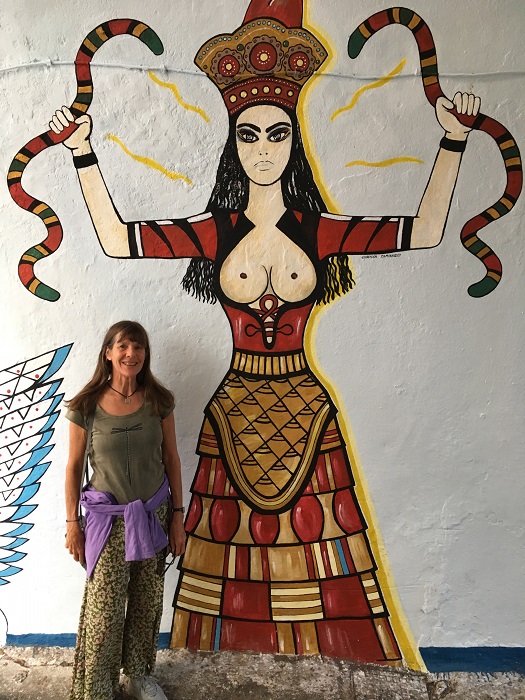
Coming up: more Minoan treasures and ancient Knossos.
*****
You will find The Rambling Writer’s blog posts here every Saturday. Sara’s latest novel from Book View Cafe is available in print and ebook: The Ariadne Connection. It’s a near-future thriller set in the Greek islands. “Technology triggers a deadly new plague. Can a healer find the cure?” The novel has received the Chanticleer Global Thriller Grand Prize and the Cygnus Award for Speculative Fiction. Sara has recently returned from another research trip in Greece and is back at work on the sequel, The Ariadne Disconnect. Sign up for her quarterly email newsletter at www.sarastamey.com

Dear Sara
I am an independent historical fiction writer whose “A Time To” series is based on the New Testament. I am now writing book 7, where some of the narrative takes place on Crete, and my characters are passing through Phaistos on their way to Gortys. I will be mentioning the Law Code engraving in my next chapter. I would love to be able to use your excellent photograph of it on one of the chapter headings. I put a small picture at the top of each new chapter, converted to black and white, which helps the reader visualise some artefact relevant to the chapter.
If I may have your kind permission to use that picture, I will of course be very glad to give proper credit to you on the acknowledgements page.
I look forward to hearing from you. Many thanks.
Susan, I just saw this, and now I’ve enjoyed emailing with you! Happy to share my photo.